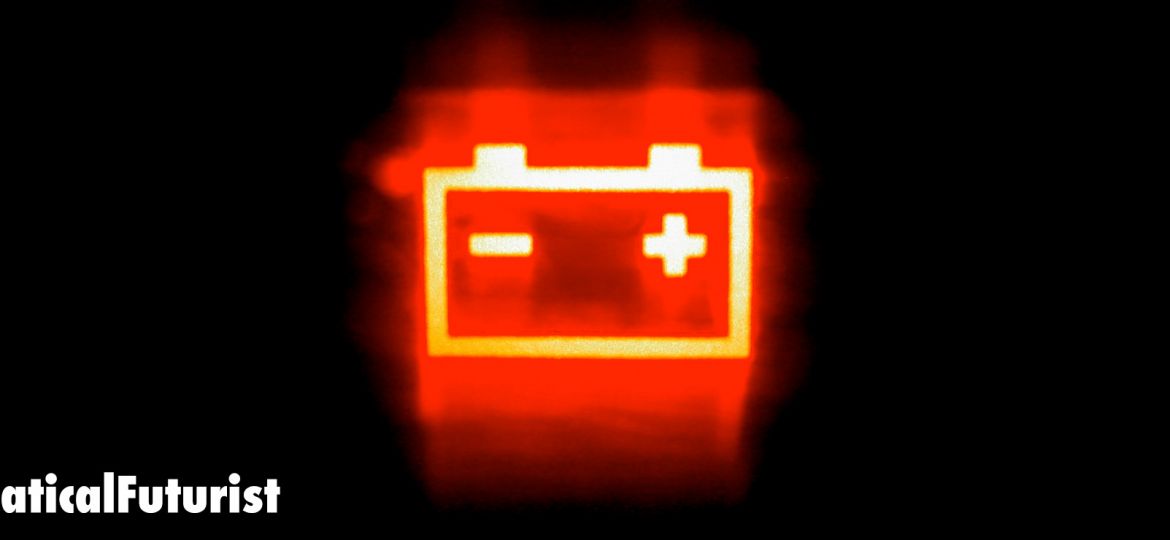
WHY THIS MATTERS IN BRIEF
- As companies are better able to tap into new energy sources it’s increasingly looking like low power devices, such as basic phones and Internet of Things sensors could ditch batteries
Ealier this week Vamsi Talla, a computer science and electrical engineering research associate at the University of Washington, showed off a new revolutionary prototype cell phone that doesn’t have any form of battery and draws power from thin air, in a lab on campus.
“Hello, I’m calling from a battery free phone,” says Talla, whose words are barely audible through pops and static. But the fact they can be heard at all, on a nearby Android smartphone, is amazing
“If you had to pick one device to make battery-free, what would you pick?” asks Joshua Smith who heads up the lab, “A cell phone is one of the most useful objects there is. Now imagine if your battery ran out and you could still send texts and make calls.”
Realizing that that vision required re-thinking almost everything about how cell phones function today, in order to operate without a battery, the phone would have to rely only on energy that it could harvest from its surroundings.
Light can be turned into electricity with solar cells, Radio Frequency (RF) TV and Wi-Fi broadcasts can be converted into energy using an antenna so perhaps, thought Talla, a hybrid system using both technologies might generate a few tens of microwatts. However, in this instance his main issue was the fact that traditional cell phones use tens of thousands of times more power, around 800 milliwatts, when making a call.
The first thing the team had to tackle was communication. Smith’s lab developed a technique called “Backscatter” that allows a device to communicate by reflecting incoming radio waves in the same way that people who need rescuing can send an SOS message with nothing more than the sun and a mirror.
Smith has already spun out a start-up called Jeeva Wireless to commercialise what he calls “Passive Wi-Fi,” a digital backscatter technology for ultra-low power Wi-Fi gadgets. However, even passive Wi-Fi proved too power hungry for the teams cell phone project.
“Converting analogue human speech to digital signals consumes a lot of power,” says Talla, “if you can communicate using analogue technology, you’re actually more power efficient.”
So although the cell phone uses digital signals to dial numbers, the backscatter process for voice calls is purely analogue.
While developing analogue backscatter, Smith realised that he was essentially re-inventing a spy technology used during the Cold War. In 1945, the Soviets presented the American Ambassador in Moscow with a carving of the Great Seal of United States, and inside was hidden an audio bug that only activated when illuminated by the correct frequency of radio waves, using the energy of the waves themselves to operate.
“My dad was a spy in the Cold War, so I heard stories about the Great Seal bug when I was a kid,” says Smith, “I wondered if analogue backscatter could be software controlled and turned from a curiosity for spooks into a technology that everyone could use.”
Like the bug though, some key components of Talla’s phone are housed remotely to save power.
A nearby base station that uses unlicensed frequencies that are limited to low power transmissions, contains the circuitry for converting and connecting to the digital cellular network, which is currently done via Skype. And because the phone relies on those signals for its energy harvesting, it has a range of just 15 meters from the base station.
To develop the phone commercially, that circuitry could be built into a Wi-Fi router at home or, more likely, a traditional phone tower which would be orders of magnitude more costly and complicated.
“Real cell towers have a hundred times as much power, and would increase the range to perhaps a kilometer,” says Talla.
But there is still a long way to go before that happens, or even gets onto the drawing board of the big telco companies, and, let’s face it, it’s unlikely that it ever will.
The phone itself has a basic touch sensitive number pad and its only display is a tiny red LED that glows briefly when a key is pressed. A large touchscreen would require around 400 milliwatts – over one hundred thousand times as much as power as the phone currently uses. But for all its advances voice calls are still awkward. You have to press a button, walky-talky style, to switch between listening and talking, and sustaining a conversation through clouds of static is near impossible.
Talla promises better call quality and an E-Ink display for text messages on the next generation device, possibly along with a camera to snap selfies, and in the meantime Smith says that even as the prototype stands, built from off-the-shelf components, it’s much cheaper than a normal phone, and built at scale, it would be cheaper still.
But the main benefit of a battery free phone? You’ve guessed it – you’d never need to charge your phone again, you’d never run out of battery, and you wouldn’t have to worry about it blowing up in your pocket…
















